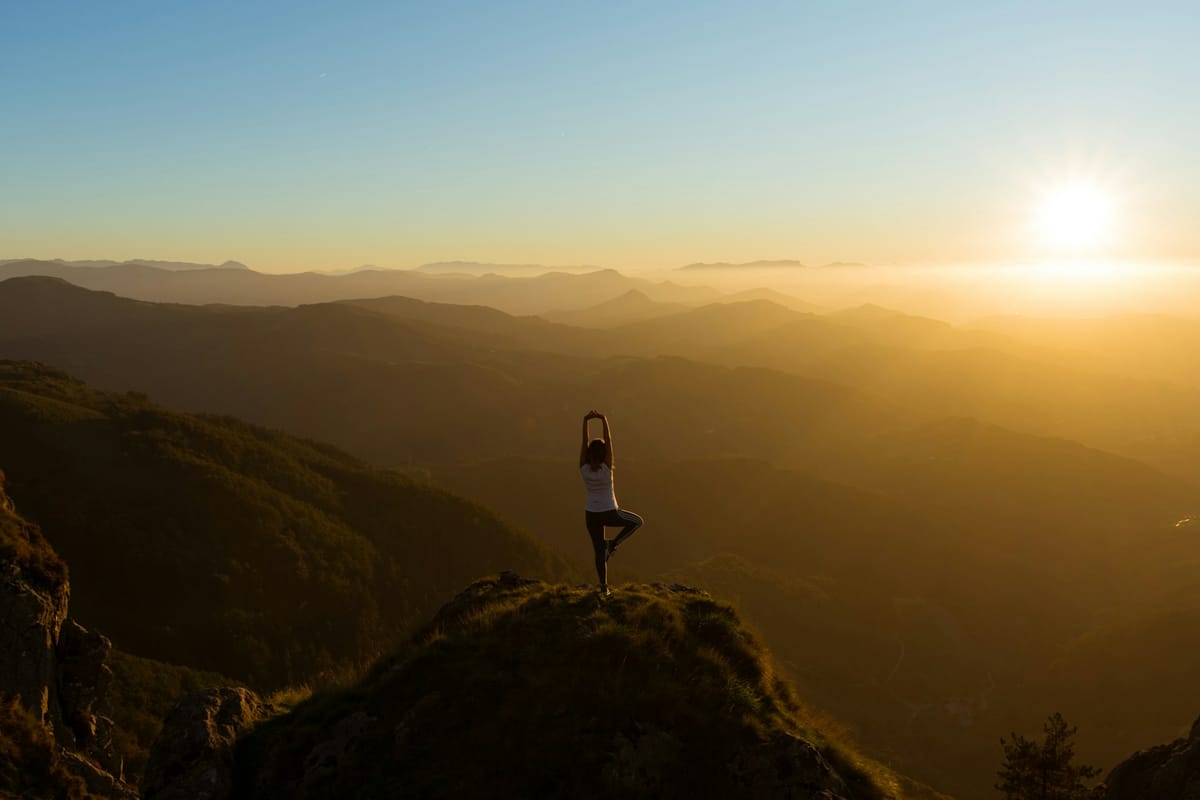How to exercise for longevity
If your goal is to work out for health and longevity, these tips might help.

Please keep in mind that these directives are not dogmatic and not set in stone. They are, however, very contextual at times.
These tips are mostly based on the exercise protocol Peter Attia suggests in his book "Outlive: The Science & Art of Longevity". While I don't agree with Dr. Attia's nutritional advice, I did learn a lot from his approach to exercise. Especially his focus on being able to train for being able to perform certain tasks, such as picking up your grand child or hiking in the last decade of your life.
Sitting is the new smoking. We've all heard that phrase. And many people do exercise in order to stay in shape. But many do it wrong, which results in injury or do too little, which has not big enough of an effect. And you can also do too much, because you strive for the looks or performance goals, which may hurt your health in the long run and lead to premature death.
This article will be an evolving piece, as there is so much to exercise that I'll probably be adding new information in the future.
Important: Talk to your doctor before doing any of this on your own. If you have pre-existing medical conditions, do not take up an exercise program without talking to your doctor first.
This is what you can do
Zone 2 exercise for 3 hours a week
A key factor for living a long and healthy life is a healthy cardiovascular system. It is best trained in training sessions of at least 30 minutes, ideally 45 minutes, for mitochondrial efficiency. So aim for 3 hours a week, split up in 4 sessions of 45 minutes, for example.
You know you're in zone 2 if you could hold a conversation, but it would be a bit uncomfortable and the other person could tell that you're exercising. It is not about going all out, and it's not supposed to feel like a Sunday afternoon walk either, but right between those two.
Train your VO₂ max once a week
VO₂ max means the maximum amount of oxygen your body can absorb and use during exercise. It is a measure for your aerobic fitness levels. VO₂ max is the greatest predictor of lifespan, so it's worth dedicating time each week to train it.
Pick a cardio exercise of your choice that you can safely perform. Cycling, running, rowing all work fine. Do a warm-up. Set a timer and do 4 intervals of intense activity with that exercise, almost all out, but make sure you can keep up the pace for 4 minutes. After those 4 intense minutes, do 4 minutes of light activity, slow down, catch your breath. Repeat that cycle until you did 4 rounds. You're done after 30 minutes and feel great afterwards.
This will greatly improve your VO₂ max, if done weekly and consistently.
A good target heart rate for it is to take 210 and subtract your age. Pick a level of effort that you can sustain for 4 minutes, but it's supposed to be exhausting. Done on an exercise bike works best, as outside, there might be traffic, or you might have to make turns if you don't have a long, even road. Sprinting is also awesome, but hard on the joints. With swimming, you'd need a good fitness watch to accurately track your heart rate, so I feel like the exercise bike is a great option for most folks.
Train all muscle groups twice a week
Strength and muscle mass are important for living healthy in old age. As you age, you lose muscle mass each year, so building and preserving as much muscle as possible is key. You don't have to become a bodybuilder to do that. A healthy strength training regimen is all you need. Think of preserved muscle mass as a retirement saving.
Why twice a week? Because that's an ideal time frame for protein synthesis, and thus building muscle. If you do too much, you might end up overtraining. If you do too little, you might not make as much progress as you could.
It's sufficient to do two full body workouts each week. The key to not plateauing is progressive overload. As your muscles adapt, you'll need to challenge them with new impulses. This can mean more weight, more reps or more volume.
As you add more volume, your routine will take longer so you might want to split up the exercise routine. So 2 full body days could turn into 4 days, where you train the upper body on two days a week and lower body and legs on the other two days a week.
Make sure to have rest days in between to allow for recovery.
Every three weeks, you can do a deload week when you do less weight or volume, to allow for recovery. To optimize training results and avoid overtraining, there's a whole science to periodization, but you don't have to overthink it at this point. I'll write more about that in other articles.
Include Exercises to Push (Chest), Pull (Back), Hip-Hinge (Squat, Deadlifts, Step-ups) and add crunches and bird dogs for core stability. Add in exercises for isolated muscle groups like biceps, triceps, shoulders and calves if you want. Other exercises, like farmer's carry, are a great addition and actually have a carry-over effect in real life when carrying groceries, for example.
The basic 3 sets of 10-15 reps per exercise work fine for most people. More refined exercise programs will be the topic of other articles.
You can do that with bodyweight exercises, with weights, machines or resistance bands. As long as you stay consistent for the rest of your life.
Train your grip strength each week
Grip strength is often overlooked, yet so important. You can start by just holding onto a pull-up bar and just hang as long as you can. You can work your way through the Captains of Crush® Grippers. Furthermore, you can go bouldering to improve your grip. There are many ways to go about this, so pick one that you can stick to each week.
Train your stability each week
A lot of injuries and even deaths in old age come from people falling and breaking their hips. Your ability to stabilize your body while moving declines with age, even if you have huge muscles. So training for stability is a very important, yet underrated, ingredient for longevity. Stability doesn't necessarily mean being able to do fancy yoga headstands, but being able to balance on one foot, catching yourself when you fall, intelligently moving through time and space and moving mindfully.
Walk a lot
The tale of 10,000 steps a day has long been debunked as a marketing effort for a company that sold pedometers. Studies show that the more you walk, the healthier you become, as more steps correlate with lower all cause mortality. 4000 steps are better than sitting on the couch all day, but 8000 steps are better than 4000 and 12000 are even better than 8000. But for the maximum longevity dose, you might want to walk 13,500 steps a day, which roughly takes 90 minutes a day. [2]
Where to start?
If you don't exercise at all, start with walking and build a habit of walking daily. Then, add more exercises as you go. Remember, this is not a sprint and there is no finish line. The goal here is to do this for the rest of your life. So start small, add more healthy moving habits as you progress, and adjust as needed. And most important of all: Have fun. Moving our bodies is a natural part of who we are. Make it fun, do it with friends, do it in nature, do whatever makes you want to do it.
Stay active and stay healthy, and thank you so much for reading.
Disclaimer
This site cannot and does not contain medical/health advice. The medical/health information is provided for general informational and educational purposes only and is not a substitute for professional advice. Accordingly, before taking any actions based upon such information, we encourage you to consult with the appropriate professionals. We do not provide any kind of medical/health advice. The use or reliance of any information contained on the site is solely at your own risk.



